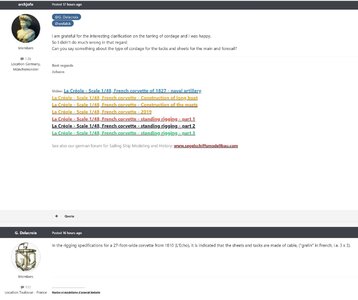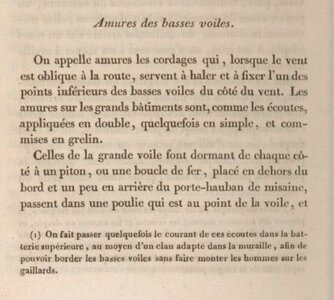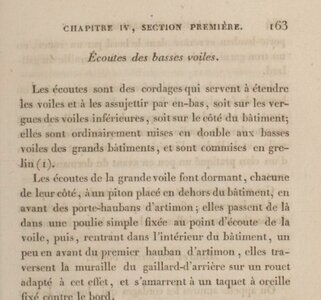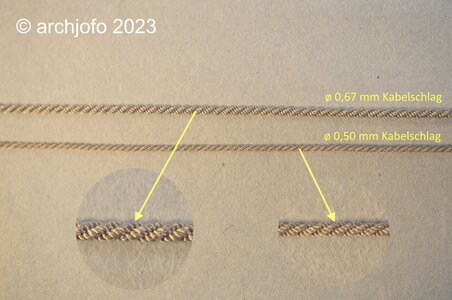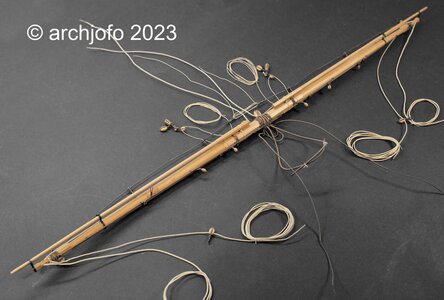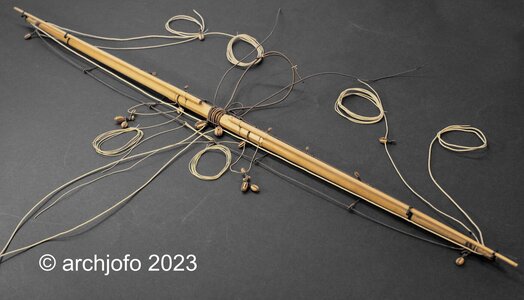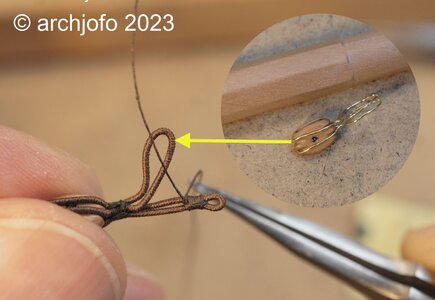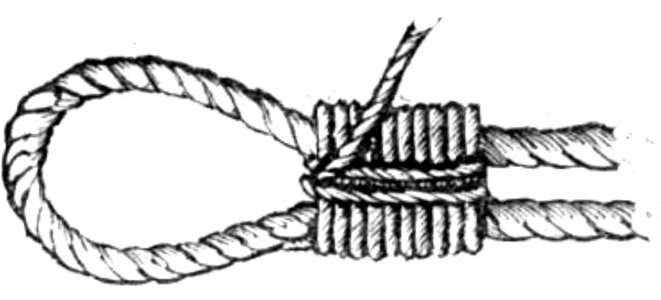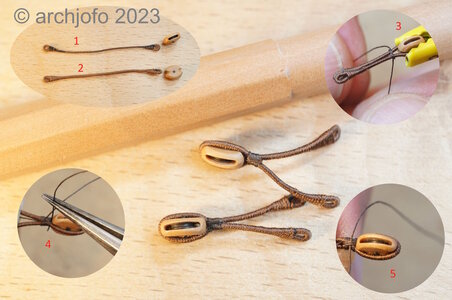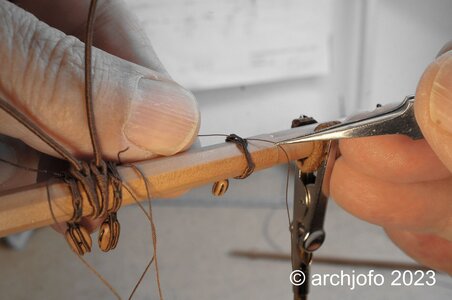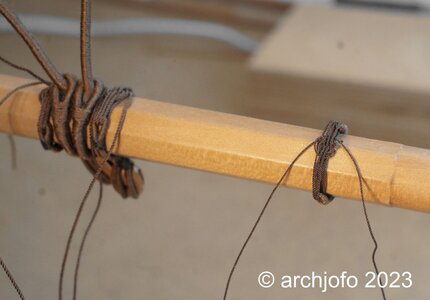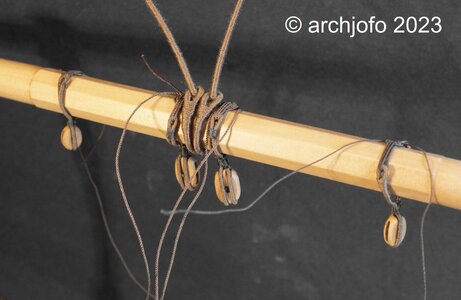Kurt Konrath
Kurt Konrath
I enjoy your fine work with blocks and rigging, but how do you make the small ropes for attaching to blocks??
 |
As a way to introduce our brass coins to the community, we will raffle off a free coin during the month of August. Follow link ABOVE for instructions for entering. |
 |
 |
The beloved Ships in Scale Magazine is back and charting a new course for 2026! Discover new skills, new techniques, and new inspirations in every issue. NOTE THAT OUR FIRST ISSUE WILL BE JAN/FEB 2026 |
 |

You think they use cablet for the tacks?There is also another question, whether the French also use cable-laid ropes for the tack ropes?

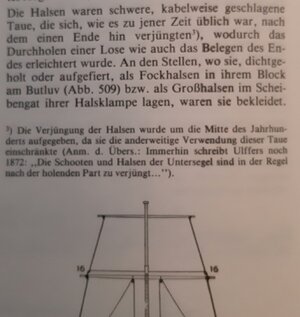



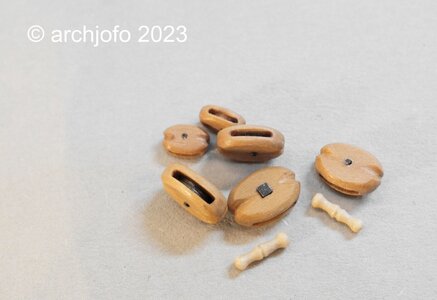
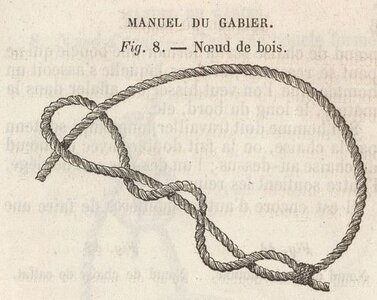
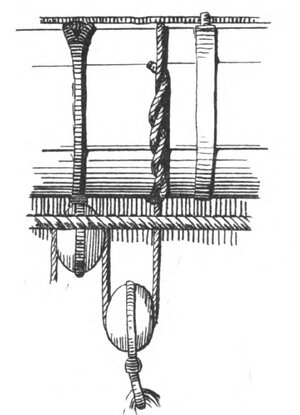
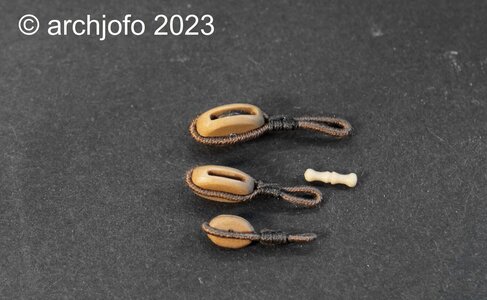
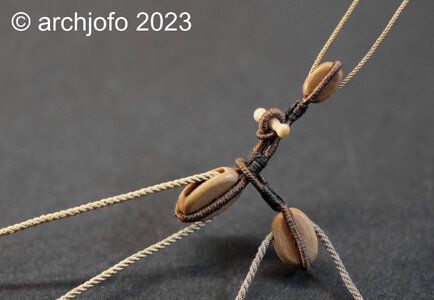
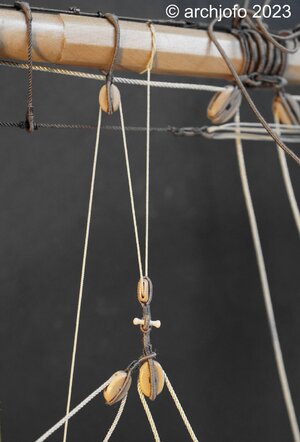
What a impressive rigging-lesson, Johann. It’s the crème-de-la-crème of rigging.Continuation: Equipment of the main yard - arrangement of the blocks for the clewlines, sheets and tacks - Bouquet de manouvres de grand voile
Since I intend to equip the yards with all the necessary rigging elements, I will also prepare the arrangements for the blocks of clewlines, sheets and tacks and pull in the necessary ropes. These elements are not present on the original model in Paris.
In the meantime I have made the corresponding single blocks for the main yard including the toggles (no stopper knots).
View attachment 376325
In doing so, I start from double tacks, as they are also provided for in the monograph and became more or less common at the beginning of the 19th century. In this respect, the question of the rejuvenated tacks should have been settled, right?
The question remains as to what type of ropes were used.
To attach the Clewlines ø 17 mm (ø 0.35 mm on a scale of 1:48) to the yards, so-called timber hitches were most likely used, as shown below.
View attachment 376324
Source: Manuel Du Gabier, 1875
View attachment 376323
Source: Handbook of Seamanship, Franz Ulffers, 1872
Of course, when rigging a model, everyone inevitably comes to the point where the question arises as to how the block strops of the running rigging should be executed in terms of colour. Either hemp-colored, or brown to black as tarred cordage. I read somewhere that anything that moves doesn't get tarred, and anything that doesn't move gets tarred. This can also be seen on the rigging of the L'Hermione replica, so I use it as a guide for my model.
View attachment 376327
This is how the finished arrangement for the blocks for the clewlines, sheets and tacks looks like:
View attachment 376326
In a hurry, I accidentally made the attachment inside. Of course, this has to be done on the outside towards the yardarm and is still being changed.
View attachment 376328
Sequel follows …

